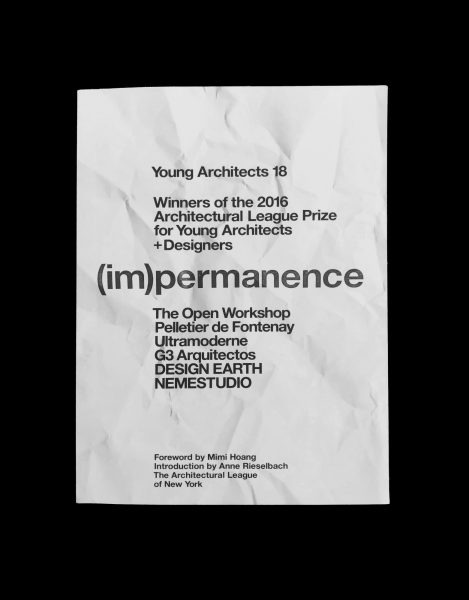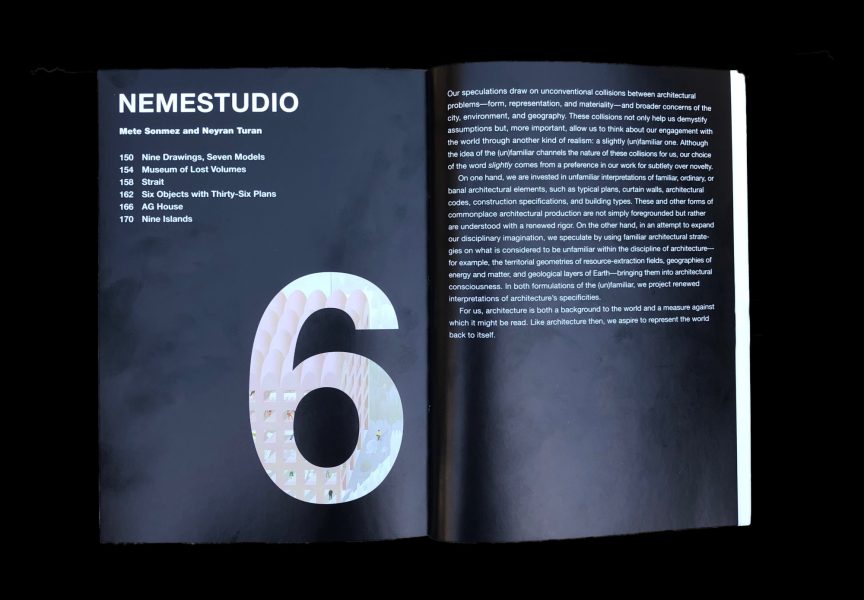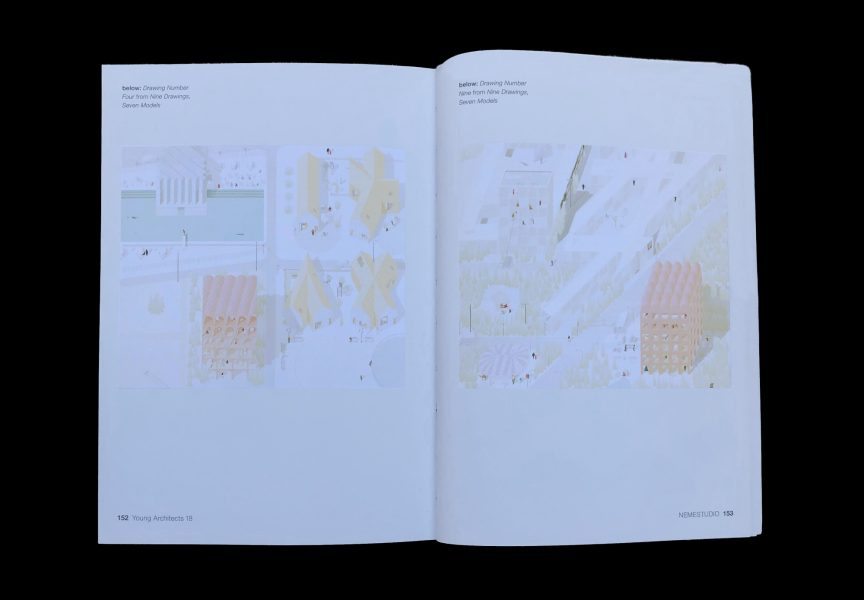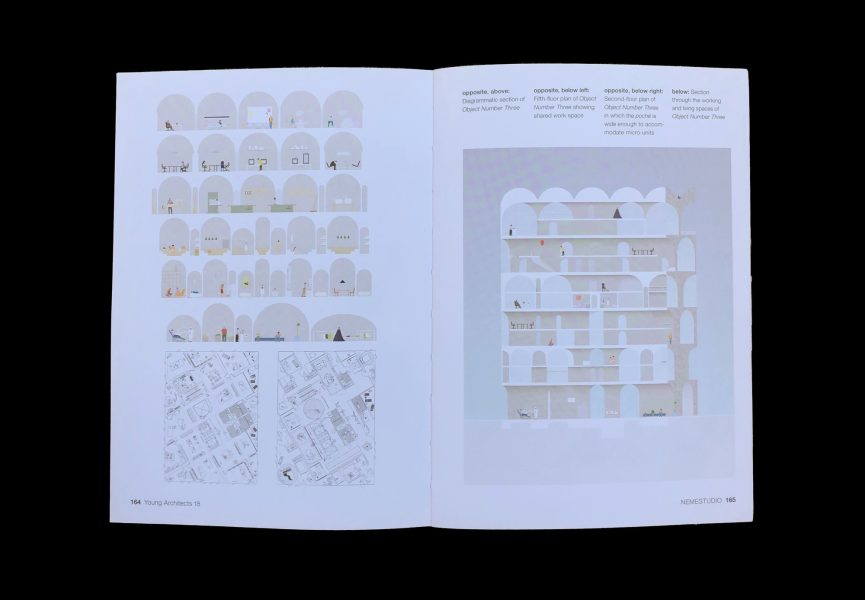For over 35 years The Architectural League Prize for Young Architects + Designers has recognized outstanding and provocative work by up-and-coming North American architects and designers. It is the focus of an exhibition and lecture series held in New York City, as well as this volume. Young Architects 18: (im)permanence features work by winners of the 2016 Architectural League Prize. The competition theme, “(im)permanence” asked entrants to consider the form and meaning of impermanence or permanence in their work. Projects by six winners respond to current aspects of society, economy, and policy, or invent systems of order that acknowledge the relationship of architecture to time. Excerpt from the NEMESTUDIO section introduction:
Our speculations draw on unconventional collisions between architectural problems—form, representation, and materiality—and broader concerns of the city, environment, and geography. These collisions not only help us demystify assumptions but, more important, allow us to think about our engagement with the world through another kind of realism: a slightly (un)familiar one. Although the idea of the (un)familiar channels the nature of these collisions for us, our choice of the word slightly comes from a preference for subtlety over novelty in our work.
On one hand, we are invested in unfamiliar interpretations of familiar, ordinary, or banal architectural elements, such as typical plans, curtain walls, architectural codes, construction specifications, and building types. These and other forms of commonplace architectural production are not simply foregrounded but rather are understood with a renewed rigor. On the other hand, in an attempt to expand our disciplinary imagination, we speculate by using familiar architectural strategies on what is considered to be unfamiliar within the discipline of architecture—for example, the territorial geometries of resource-extraction fields, geographies of energy and matter, and geological layers of Earth—bringing them into architectural consciousness. In both formulations of the (un)familiar, we project renewed interpretations of architecture’s specificities. For us, architecture is both a background to the world and a measure against which it might be read. Like architecture then, we aspire to represent the world back to itself.





